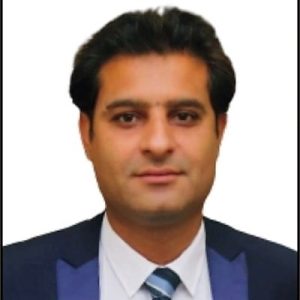This article explores the fundamental importance of implementing rapid tests in the diagnosis of dengue, emphasizing their essential role in early detection and efficient management of this mosquito-transmitted disease. These tests, based on the detection of viral antigens or specific antibodies, not only provide results in record time but also constitute a significant contribution to global healthcare.
Rapid tests offer an immediate response, allowing timely medical intervention that can make a difference in the clinical course of the patient. Their ability to identify the virus in the early stages of infection is crucial, not only for individualized care but also for mitigating the spread of dengue at the community level. Moreover, by distinguishing between virus serotypes, these tests provide a more precise perspective for the application of therapeutic and preventive strategies. The accessibility and simplicity of rapid tests become key elements for their positive impact, especially in resource-limited settings. The swift availability of results not only accelerates clinical decision-making but also facilitates the collection of crucial epidemiological data. This information contributes to the strategic planning of public health authorities, enabling a coordinated and efficient response to dengue outbreaks and epidemics.
The widespread adoption of rapid tests in dengue diagnosis emerges as a fundamental pillar in global healthcare. Their ability to provide rapid and accurate results, their role in early detection, and their contribution to efficient management make these tests an invaluable tool in the fight against this prevalent disease, redefining how we approach the diagnosis and treatment of dengue on a global scale

By Nicolás Castillo
Biochemical. Private Laboratory Santa Clara de Saguier Sanatorium, Santa Fe, Argentina
Rapid Diagnosis of Dengue
a Crucial Tool in Global Healthcare
Introduction
Dengue, a mosquito-borne viral disease transmitted by Aedes mosquitoes, has become a growing concern for global health due to its significant impact in various regions worldwide. The complexity of the infection, ranging from mild to potentially life-threatening cases, underscores the critical importance of effective detection and management strategies. Swift identification of the virus stands as an essential pillar for the efficient management of individual cases and the prevention of epidemic spread.
In this context, rapid tests have emerged as fundamental tools in the diagnosis of dengue, offering innovative and efficient solutions to address the clinical challenges associated with this disease.
These tests, based on the detection of viral antigens or specific antibodies, not only provide rapid results but also play a crucial role in enabling timely medical interventions. This immediate responsiveness translates into improved disease management, minimizing morbidity, and contributing to the prevention of severe complications.
As the burden of dengue continues to be a public health concern, research and the implementation of advanced diagnostic tools become imperative. Rapid tests, by offering a unique combination of speed and accuracy, position themselves as essential components in a comprehensive strategy to address dengue.
Development
The constant evolution in the fields of medicine and technology has led to an ongoing reevaluation of diagnostic methods for infectious diseases such as dengue. Particularly, the introduction of rapid tests has marked a paradigm shift in how we approach the identification and management of this mosquito-borne viral disease.
Rapid tests for dengue are based on the detection of viral antigens or specific antibodies in the patient’s sample. Unlike conventional methods such as serology and polymerase chain reaction (PCR), these tests offer a crucial advantage in terms of agility and simplicity. The immunochromatographic response allows for results in a matter of minutes, facilitating timely medical intervention.
The sensitivity and specificity of rapid tests are determining factors in their effectiveness. Numerous clinical studies have demonstrated their ability to detect the dengue virus in the early stages of infection, even before evident clinical symptoms appear. Early identification of cases benefits not only the individual patient but also holds significant implications for the community and epidemiological management of the disease.
The distinction between virus serotypes is crucial, as certain serotypes can trigger more severe forms of the disease. Rapid tests, by providing information about the specific serotype present in the sample, enable a more precise adaptation of treatment and control strategies. This capability to distinguish between different serotypes represents a significant advancement in tailoring medical care for patients affected by dengue.
Moreover, the application of these tests in daily clinical practice provides a valuable tool for informed decision-making by healthcare professionals. The swift availability of results allows for the immediate implementation of preventive and therapeutic measures, reducing morbidity and mortality associated with dengue. This translates into more efficient and effective care, especially in resource-limited settings.
Nevertheless, it is crucial to address some challenges associated with the widespread implementation of rapid tests. Variability in the sensitivity of these tests in different infection stages and diverse populations can impact their performance. Additionally, proper training of healthcare personnel is essential to ensure accurate interpretation of results and their effective integration into clinical protocols.
The integration of rapid tests into clinical practice not only has implications at the individual level but also at the epidemiological level. Accurate data collection on dengue prevalence and serotype distribution facilitates a more effective response to outbreaks and epidemics. Epidemiological information derived from these tests contributes to the strategic planning of public health authorities, enabling more efficient resource allocation and a rapid response to emergency situations.
In conclusion, rapid tests have emerged as essential tools in the diagnosis of dengue, offering a unique combination of speed, effectiveness, and accessibility. Their proper implementation and continuous research in this area are crucial to maximizing their positive impact on clinical and epidemiological management of dengue. These advancements not only enhance individual patient care but also significantly contribute to mitigating the global burden of this mosquito-borne disease.
Discussion
The widespread implementation of rapid tests in dengue diagnosis presents challenges and opportunities. It is crucial to address the variability in the sensitivity of these tests, considering the dynamics of infection and the patient’s immune response. Proper training of healthcare personnel and the integration of these tests into clinical protocols are key aspects to maximize their positive impact.
Early detection of dengue not only benefits the individual patient but also contributes to the effective management of outbreaks and epidemics. The ability to identify cases quickly allows for a more efficient mobilization of resources and the implementation of vector control measures. Additionally, the collection of accurate epidemiological data facilitates informed decision-making by public health authorities.
Conclusions
In conclusion, the incorporation of rapid tests in dengue diagnosis represents a significant advancement in the fight against this disease. The speed and effectiveness of these tests have the potential to transform clinical and epidemiological management, improving outcomes for patients and the community at large. Proper implementation and ongoing research in this area are essential to maximize the benefits of these rapid diagnostics and contribute to the global reduction of the dengue burden.
References
- World Health Organization. Dengue: Guidelines for Diagnosis, Treatment, Prevention and Control. Geneva: World Health Organization; 2009.
- Guzmán MG, Kourí G. Dengue: an update. The Lancet Infectious Diseases. 2002;2(1):33-42.
- Peeling RW, Artsob H, Pelegrino JL, et al. Evaluation of diagnostic tests: dengue. Nature Reviews Microbiology. 2010;8(12 Suppl):S30-38.
Additional Citations
Bhatt S, Gething PW, Brady OJ, et al. The global distribution and burden of dengue. Nature. 2013;496(7446):504-507.
Simmons CP, Farrar JJ, Nguyen V, Wills B. Dengue. The New England Journal of Medicine. 2012;366(15):1423-1432.
Wilder-Smith A, Ooi EE, Horstick O, Wills B. Dengue. The Lancet. 2019;393(10169):350-363.
______
BY THE SAME AUTHOR ON PEAH
Preparing for the Future: The Vitality of an Effective Testing Strategy in Future Pandemics
The Positive Impact of Artificial Intelligence in Future Pandemics
The Value of Communication in a Pandemic
Epidemiological Surveillance in Pandemics
Population Aging, a Challenge for Public Health in Latin America and the World









